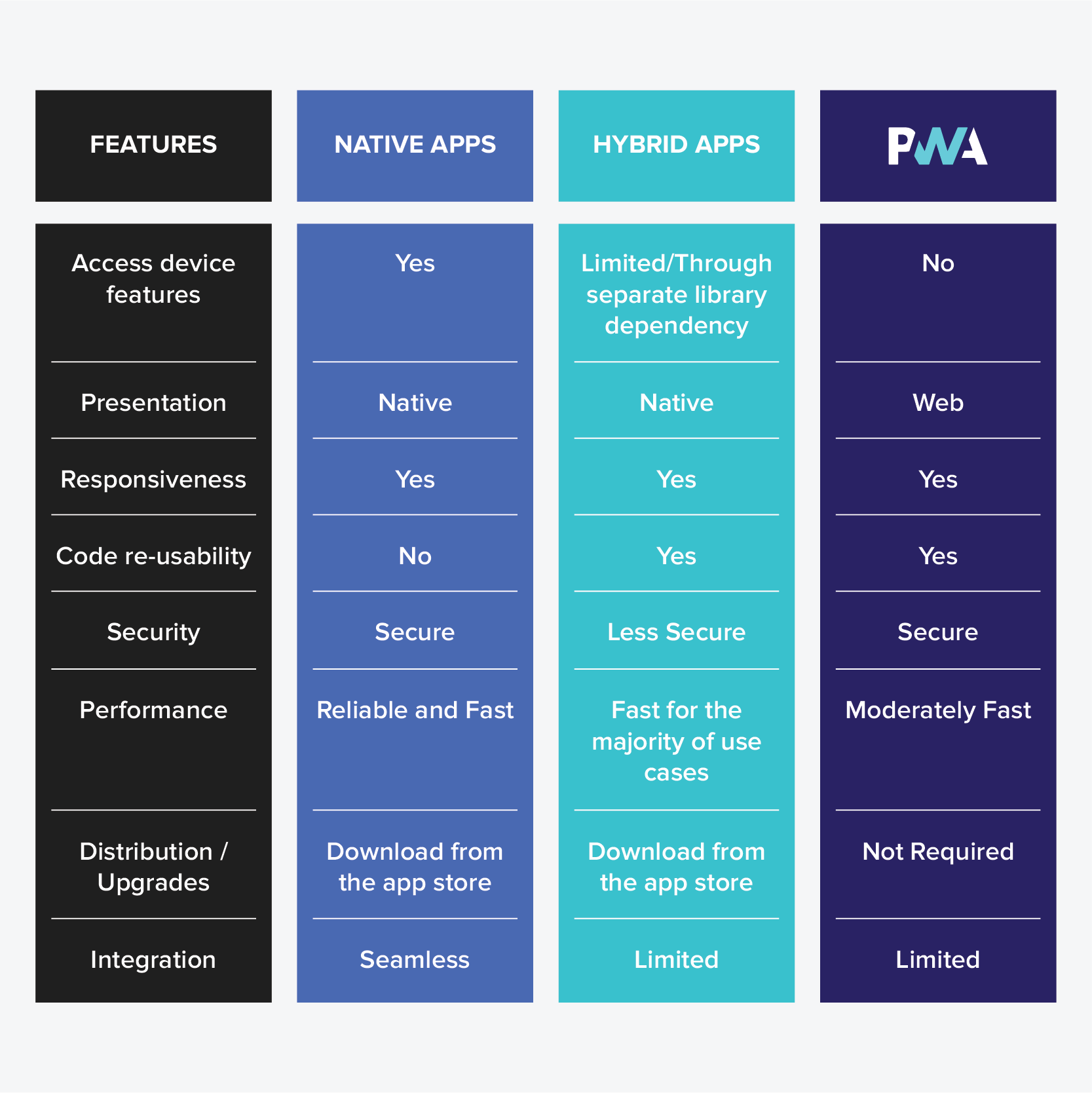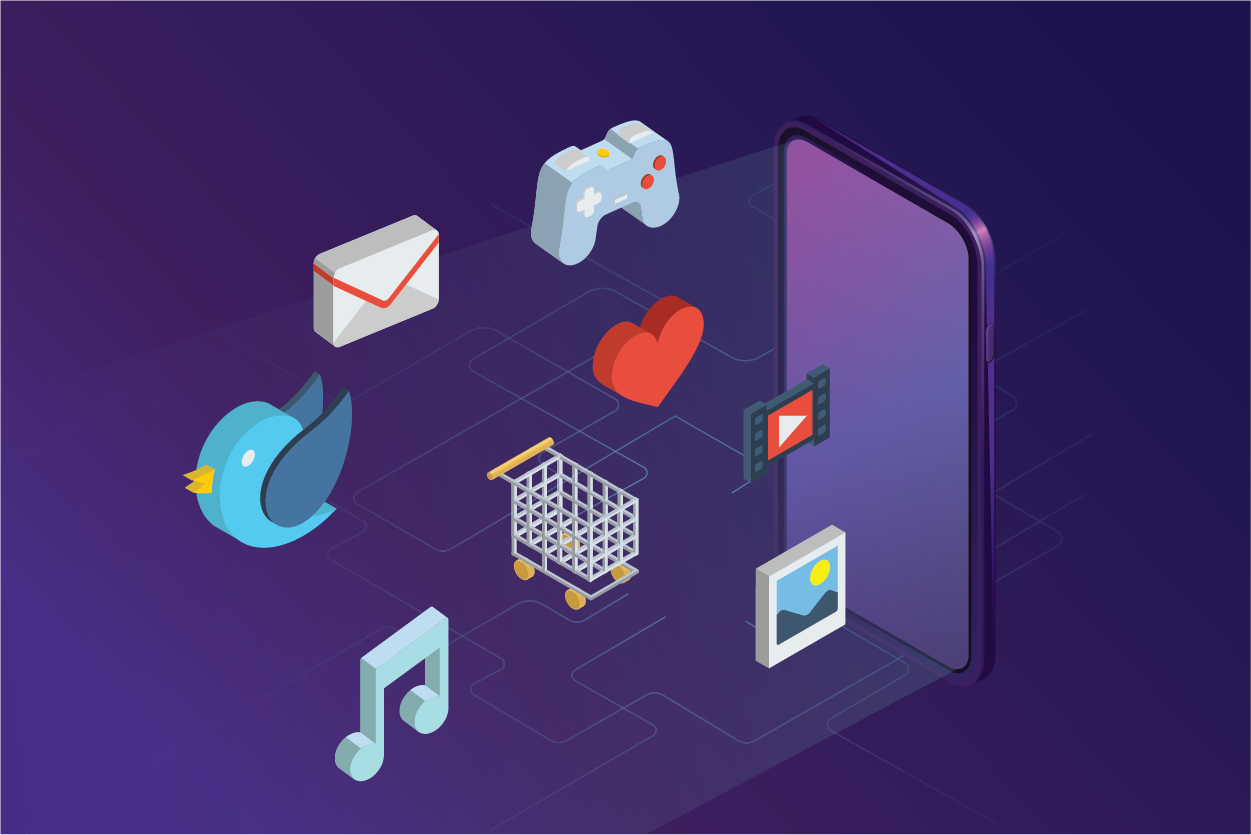Effortless Experience is a user experience strategy that focuses on building up products by getting the job done without putting any effort into learning the user interface. This process involves designing the flow and navigation that matches the end-users terminologies and language, reducing the number of clicks required, etc.
Even as customer experience remains a top business priority for business-to-consumer (B2C) companies, business-to-business (B2B) customers are not behind in demanding a better experience. According to a McKinsey & Company study, improved customer experience can reduce customer churn by up to 15% and increase win rate up to 40% for B2B companies.
Mobile applications (apps) have emerged as crucial digital customer engagement channels, but their applications in businesses extend beyond marketing and sales. Mobile apps are increasingly gaining traction due to the automation of internal business processes. This automated internal business process enables employees to access information and data quickly. According to a ServiceNow research, employees with mobile access reported a 23% increase in the ability to access information and a 25% increase in their ability to accomplish the work.
An effortless experience for mobile apps is the basic need. Whether it's B2C, B2B, or B2E, each segment aims for an intuitive user interface and easy navigation. Mobile apps that offer seamless integration of back-end systems and processes in addition to user-friendly interfaces are the ideal ones.
Impeccable user experience on mobile apps is important because 29% of smartphone users will switch to another site or app if it is too slow or requires a lot of steps to get desired information or complete a purchase. A strong partnership between business functions and IT is critical to ensure high mobile app uptime, scalable IT infrastructure for business process integration, and maintain security and data privacy to deliver effortless mobile experiences for users.
What are the types of mobile apps?
The two most important mobile platforms are Android from Google and iOS from Apple. Android OS and iOS platforms dominate the mobile apps market with 69.74% and 29.49% share respectively. iOS is a proprietary mobile operating system for Apple devices, while Google and other original equipment manufacturers (OEM) uses Android OS to build mobile devices.
You can classify mobile apps into three types based on the technology used to build them.
- Native apps
Mobile apps that are built specifically for a mobile device’s operating systems or platform are referred to as native apps. The term native denotes the fact that the app is “native” or specific to only one type of mobile operating system.
Unlike websites that can open in any browser, mobile applications are packaged for a particular mobile operating system. Native apps can be discovered and downloaded from application stores of the respective operating systems or platforms like iOS apps from the App Store and Android apps from the Google Play Store. While native apps give access to entire device capabilities, it also drives up the cost and efforts needed to develop and maintain the codebase.
Native apps are faster and have reliable performance. You can develop them using Java, Objective-C, Kotlin, or Swift. These types of apps hold the capacity of leveraging device features like camera, mic, GPS, push notifications, etc., by connecting directly with the device hardware. Thus, you can have a superior experience with the quick loading of features.
- Hybrid Apps
Hybrid applications combine native device capabilities with non-native technologies like Javascript/Typescript, Dart, and C#. This allows the team to develop applications with performance close to native performance but with a single codebase.
Hybrid apps are cost-efficient, and you can build quickly compared to native apps. The apps with a single code base are easy to maintain. However, they lack the sophistication and power of a native app.
Some of the common platforms for hybrid apps are React Native, Flutter, and Xamarin Forms.
- Responsive Web Apps and Progressive Web Apps
You can build responsive web applications to accommodate different screen sizes and reach multi-platform users with the same code. You can access responsive web apps from any device using mobile browsers without any platform limitations. These mobile apps are usually programmed using HTML5, CSS, and Javascript development languages.
Web apps development and maintenance costs are low due to non-necessity platform-specific development and customization. It doesn’t take space on user devices, unlike native apps downloaded and stored on devices. The app upgrades are silent, and it doesn’t force the users to update. The latest versions are readily available to users when accessed through web browsers.
User experiences on web apps are dependent on browsers used in devices and are non-uniform across devices. Web apps fail to work offline even though they have an offline mode. The device requires an internet connection to backup/retrieve data. Additionally, there are other issues such as page load time, battery usage, and bandwidth consumption.
In such situations, Progressive Web Application (PWA) comes into the picture. The objective of PWA is to make web application user experiences similar to native apps by getting access to some native device capabilities. PWA functions like native apps with a responsive design, fast load speed, home screen app icon, ability to work in low-speed network and offline, sending push notifications, and more.
PWAs are of great value when you already have a complete business solution working as a web application and looking out to support a mobile interface as a channel with some offline capability. However, there are a couple of drawbacks, like, non-native UI, device features, access restrictions, etc.
Many businesses have successfully leveraged PWA to reach new markets and enhance user experience and engagement. A few popular brands using PWA successfully are Starbucks, The Washington Post, Forbes, Flipkart, Twitter, etc.
What are the factors that need to be considered for choosing the right app type?
Mobile apps serve a purpose, and the intended end use is an important deciding factor for the selection of the right app type. Some important factors to consider for selecting the right mobile app type are.
- End-use applications
The end-use of an application is the first important factor to consider when deciding on the app type. Apps that need to be performant, with excellent UX for specific OS, need to be built as Native apps. Similarly, to provide an effortless experience by taking device-specific UX into account, native apps offer the best value. For example, WhatsApp has a different user interface on Android and iOS.
- Integration
Native apps provide direct integrations with third-party drivers of external or IoT devices. Hybrid apps can integrate with third-party devices too however, that would add a dependency on an additional self-made or externally sourced library dependency. If the mobile solution requires integration with third-party applications, then native apps would be more suitable.
- Cost
When device-specific UX or native capabilities are not part of the product’s USP, native apps incur additional costs to build. This is because you need to build and work on separate Android and iOS applications. In this scenario, If budget is a constraint, then other app types will be preferred over native apps.
- Maintenance
Native apps require extensive efforts to manage and maintain the code base for both Android and iOS platforms. App maintenance on an ongoing basis requires human and financial resources, and this needs to be considered while selecting app types.
Native Vs Hybrid Vs PWA - Feature Comparison

How to define the success factors for mobile apps?
A successful mobile app meets end users' needs quickly and effectively. An intuitive user interface, simple design, and ease of navigation are the obvious success factors for mobile apps.
Some additional success factors are
- Solves a problem
Mobile apps should address end users' needs or problems to help them simplify their lives. First identify the user problem or the pain point your app will solve. The problem should not be broadly defined but should be specific.
- User centricity
After identifying the problem, you need to narrow it down to end-users and define their characteristics. You should do UX research that will enable you to create a user-friendly design and layout. A user-centric app will help you get more active users and ensure higher engagement.
- App focus and simplicity
A narrow definition of a problem will help you distill them into a core set of app features relevant to your end-users. The focus on a limited set of features will help optimize resources and simplify the design to deliver a user-friendly, high-performance app. Focus helps to achieve simplicity, which is the ultimate sophistication.
- App performance
Mobile app performance is the most important contributing factor in the success of apps. App performance indicates how well a mobile app works on mobile devices in different contexts. Mobile app performance includes multiple factors such as device, operating system, server, network, internet connectivity, and speed. Load time is an important app success factor because 20% of smartphone users switch to alternative apps or sites because it takes too long to load.
How can you transform user experience with Srijan’s mobile app development services?
Enterprise mobility solutions for businesses have a broader scope, from automating internal business processes to creating a personalized customer experience. The mobility solutions help enterprises leverage the increasing use of smartphones and mobile devices to maximize business reach and enhance organizational productivity and efficiency.
Srijan’s Enterprise Mobility services enable businesses to implement mobile solutions across their business value chain. Our consultative approach, application development experience, and Android and iOS platform capabilities can help you create mobile apps that meet your business objectives and provide an effortless experience to your end-users. You can contact us for more details.
Our Services
Customer Experience Management
- Content Management
- Marketing Automation
- Mobile Application Development
- Drupal Support and Maintanence
Enterprise Modernization, Platforms & Cloud
- Modernization Strategy
- API Management & Developer Portals
- Hybrid Cloud & Cloud Native Platforms
- Site Reliability Engineering



